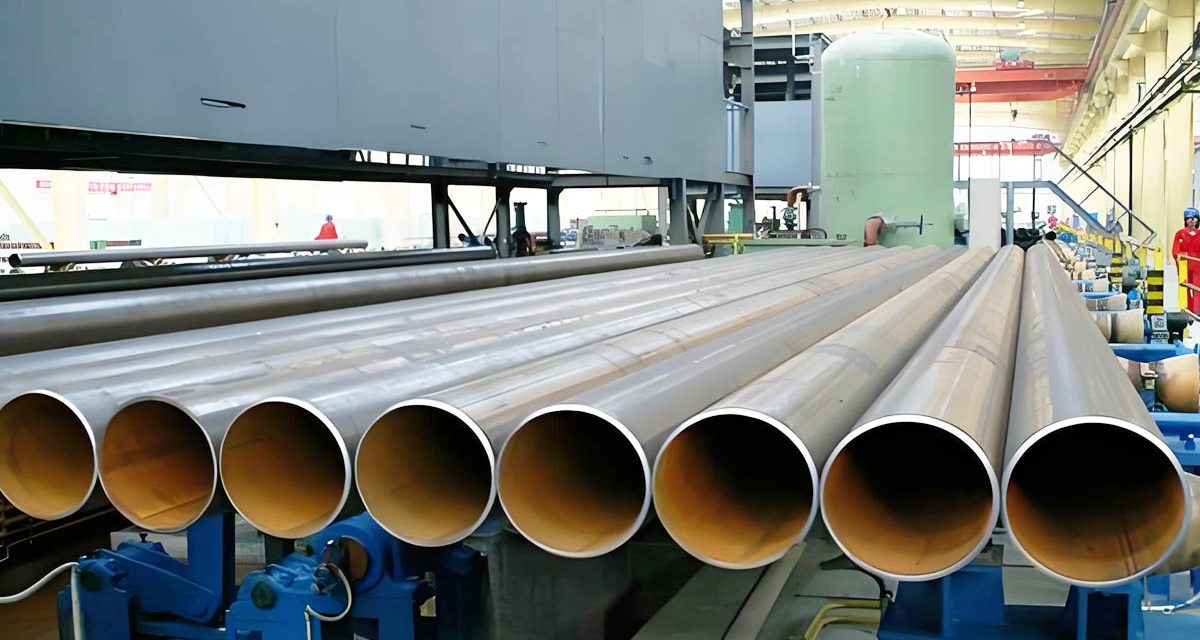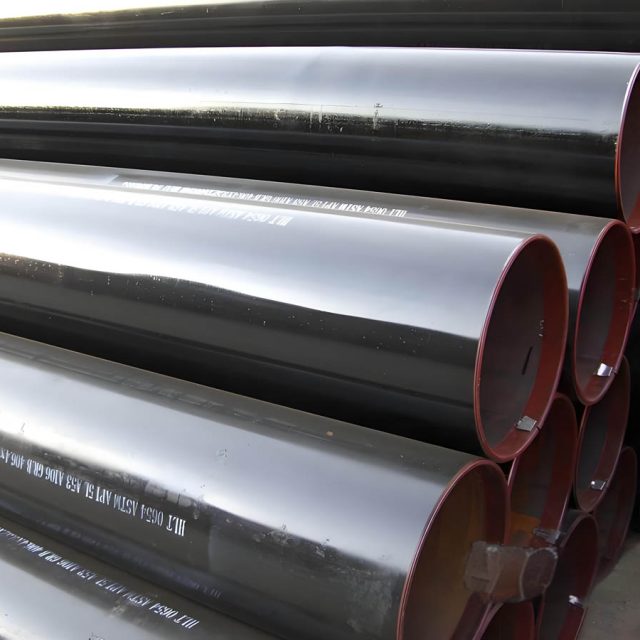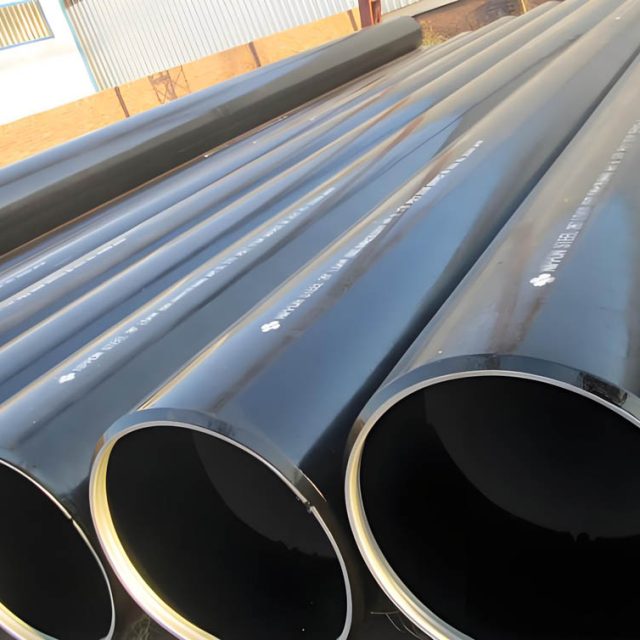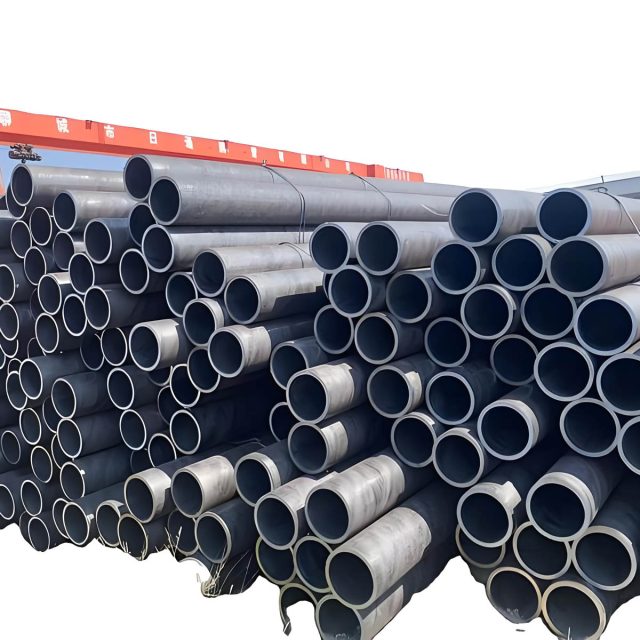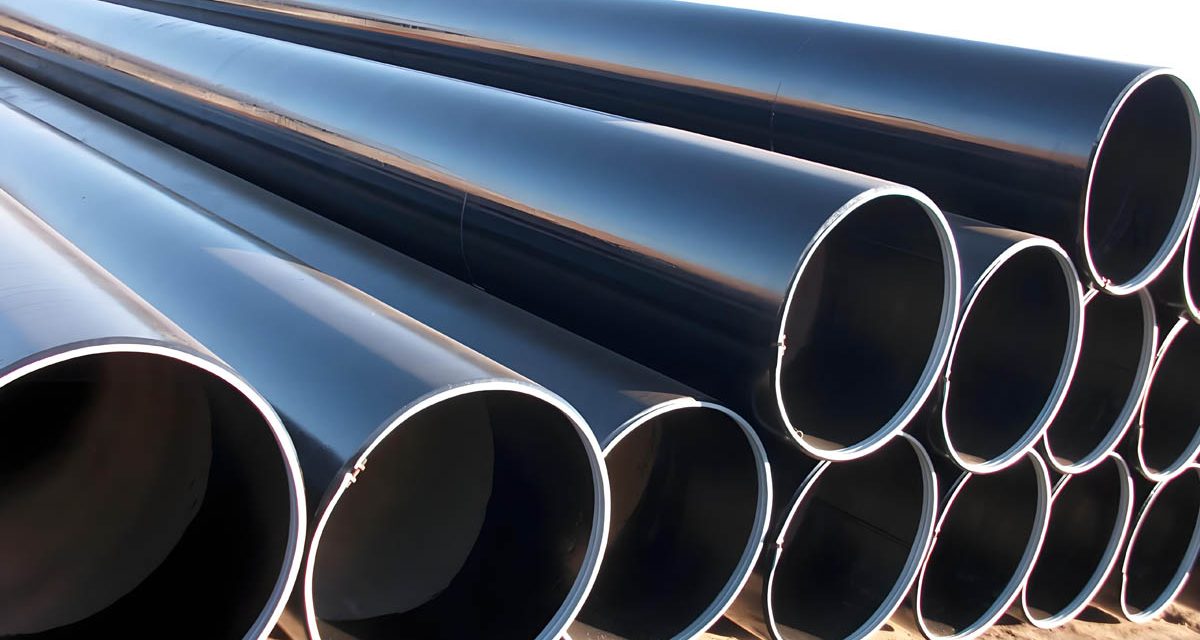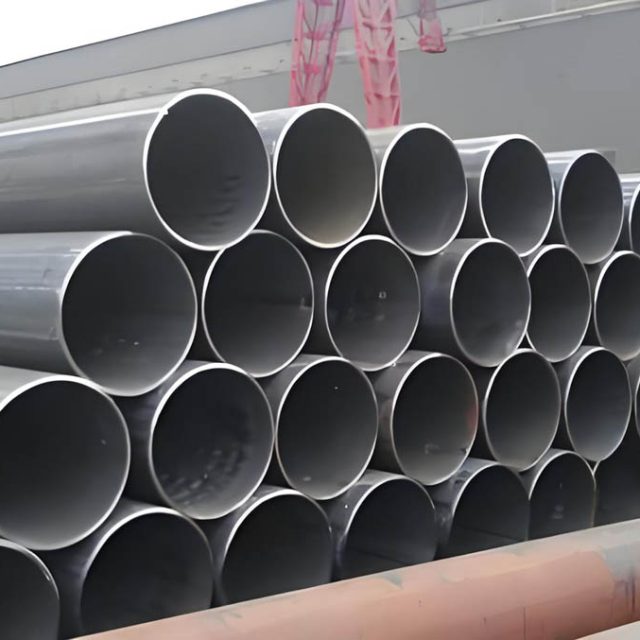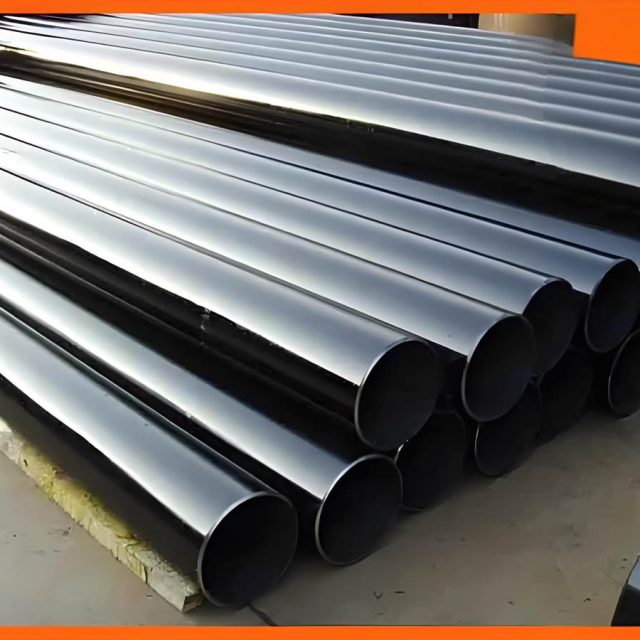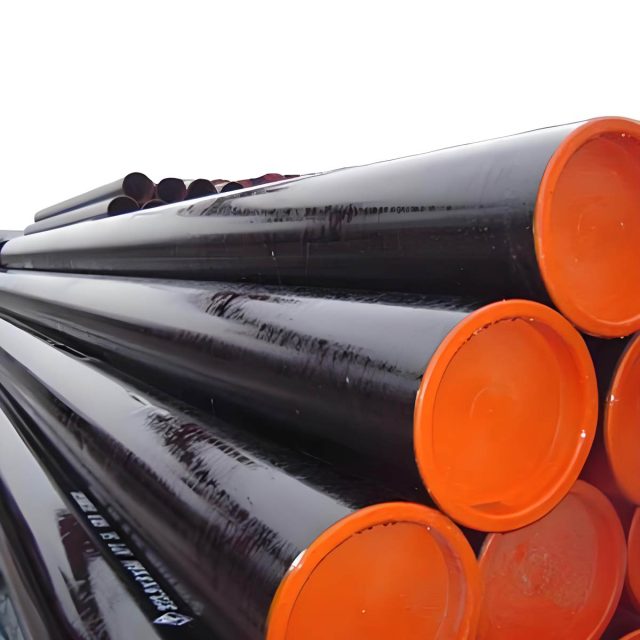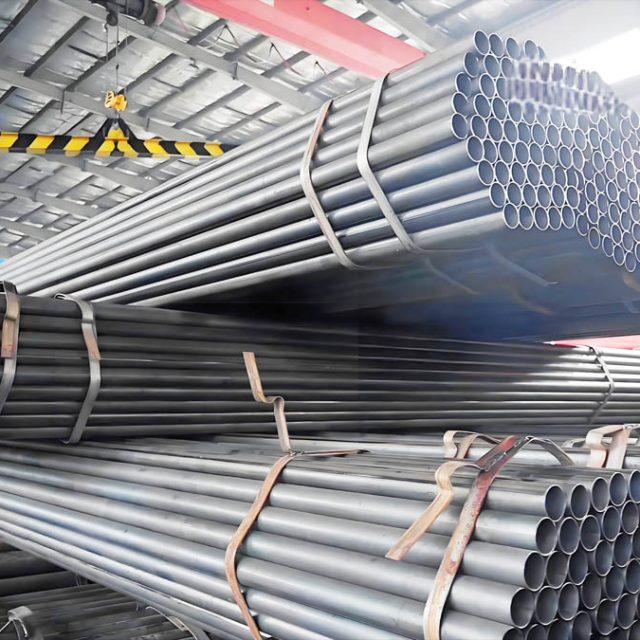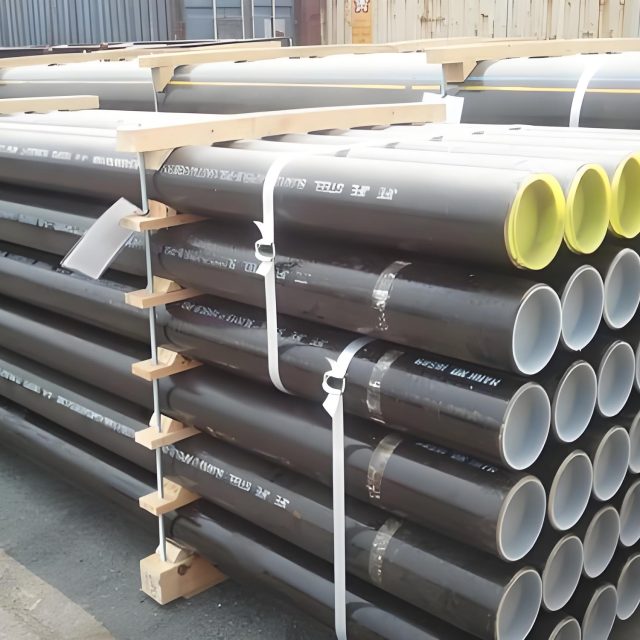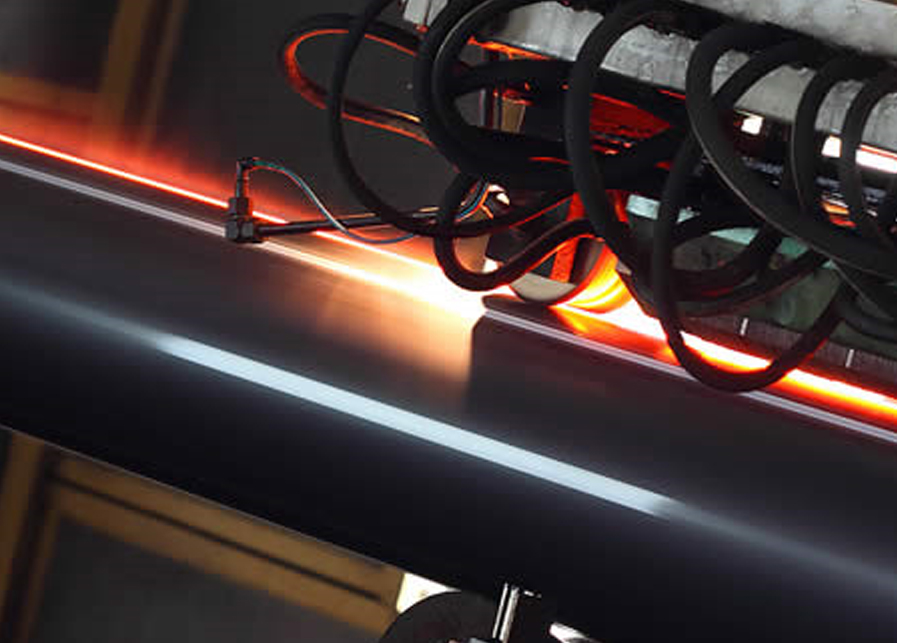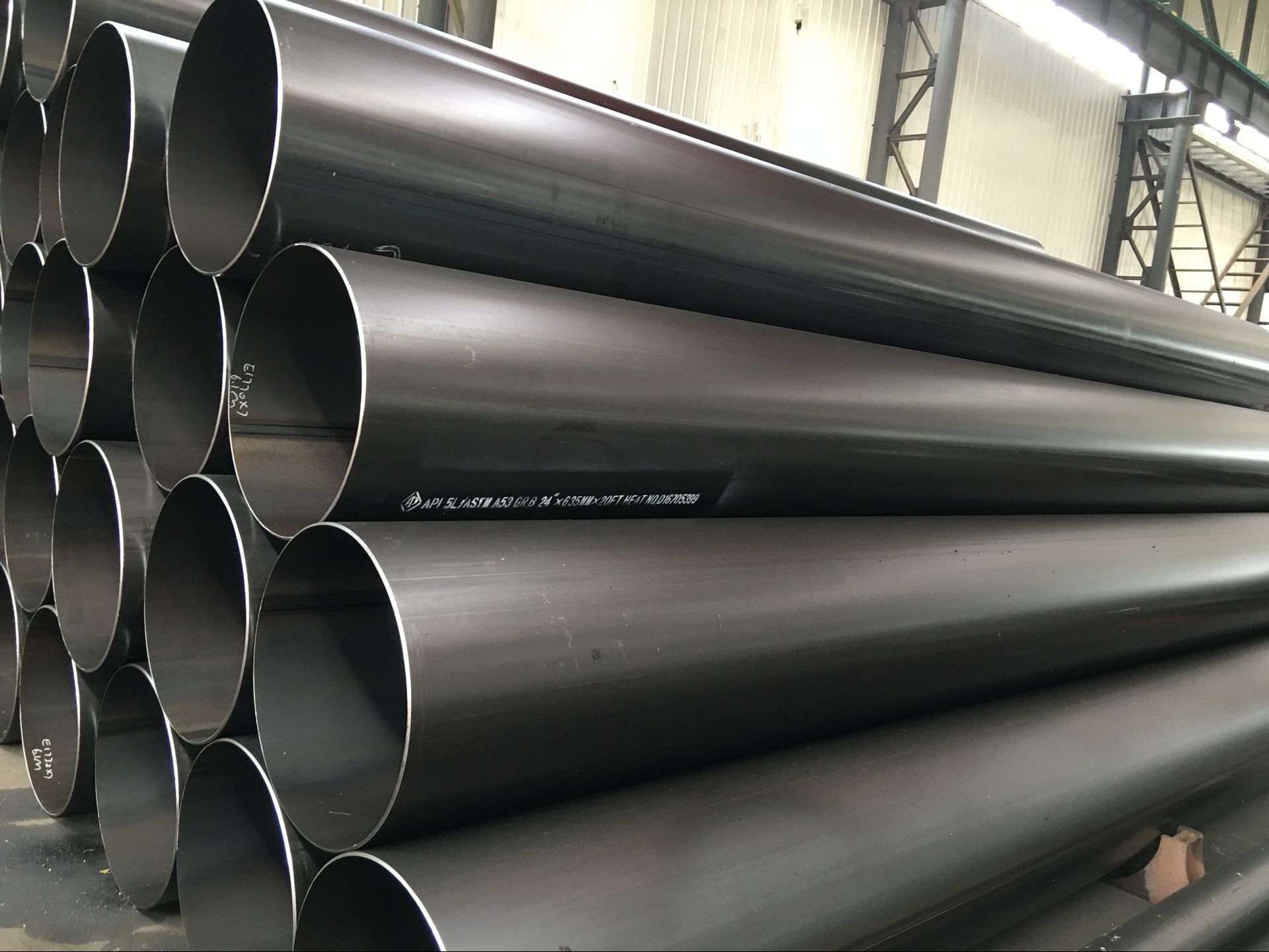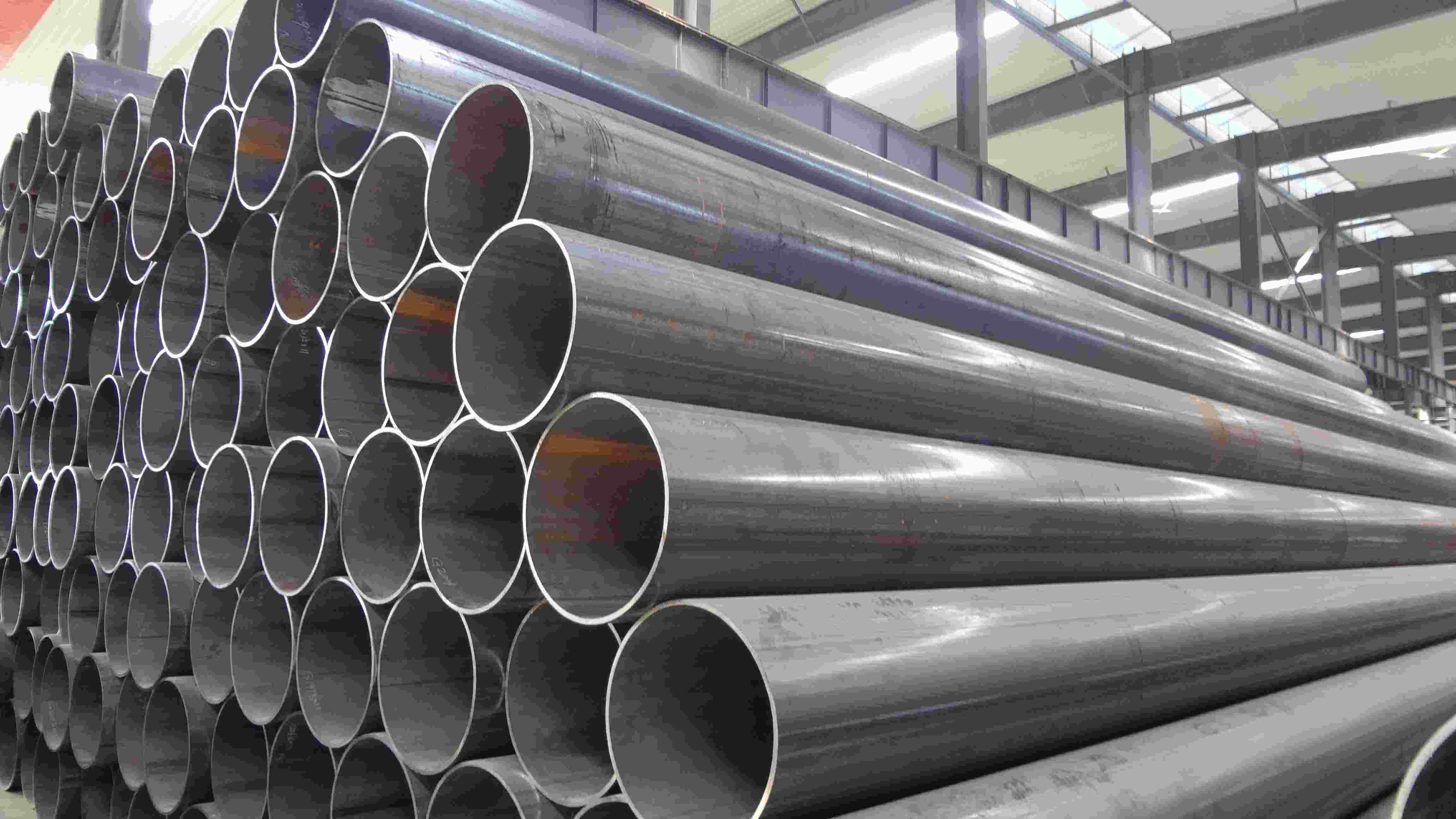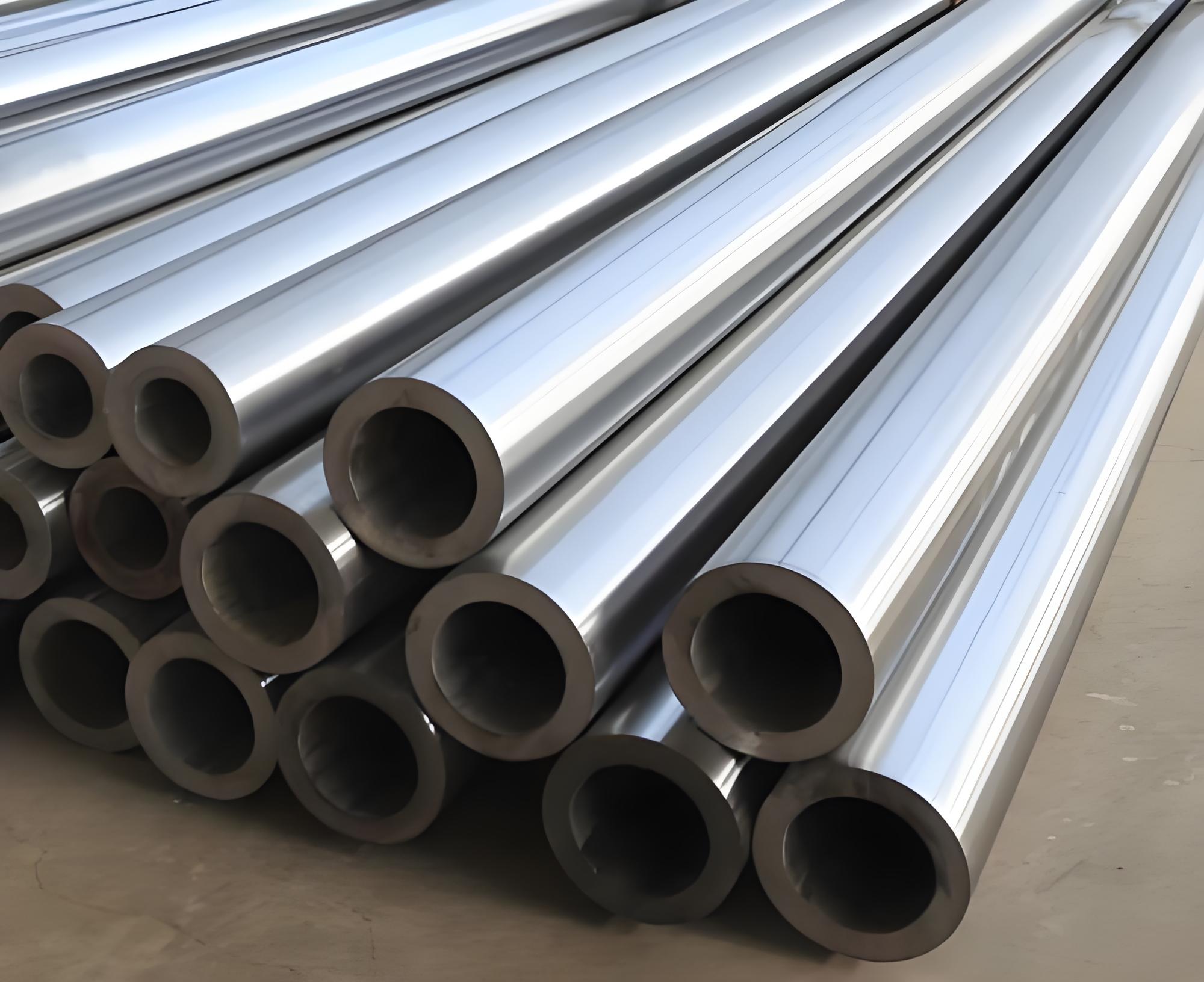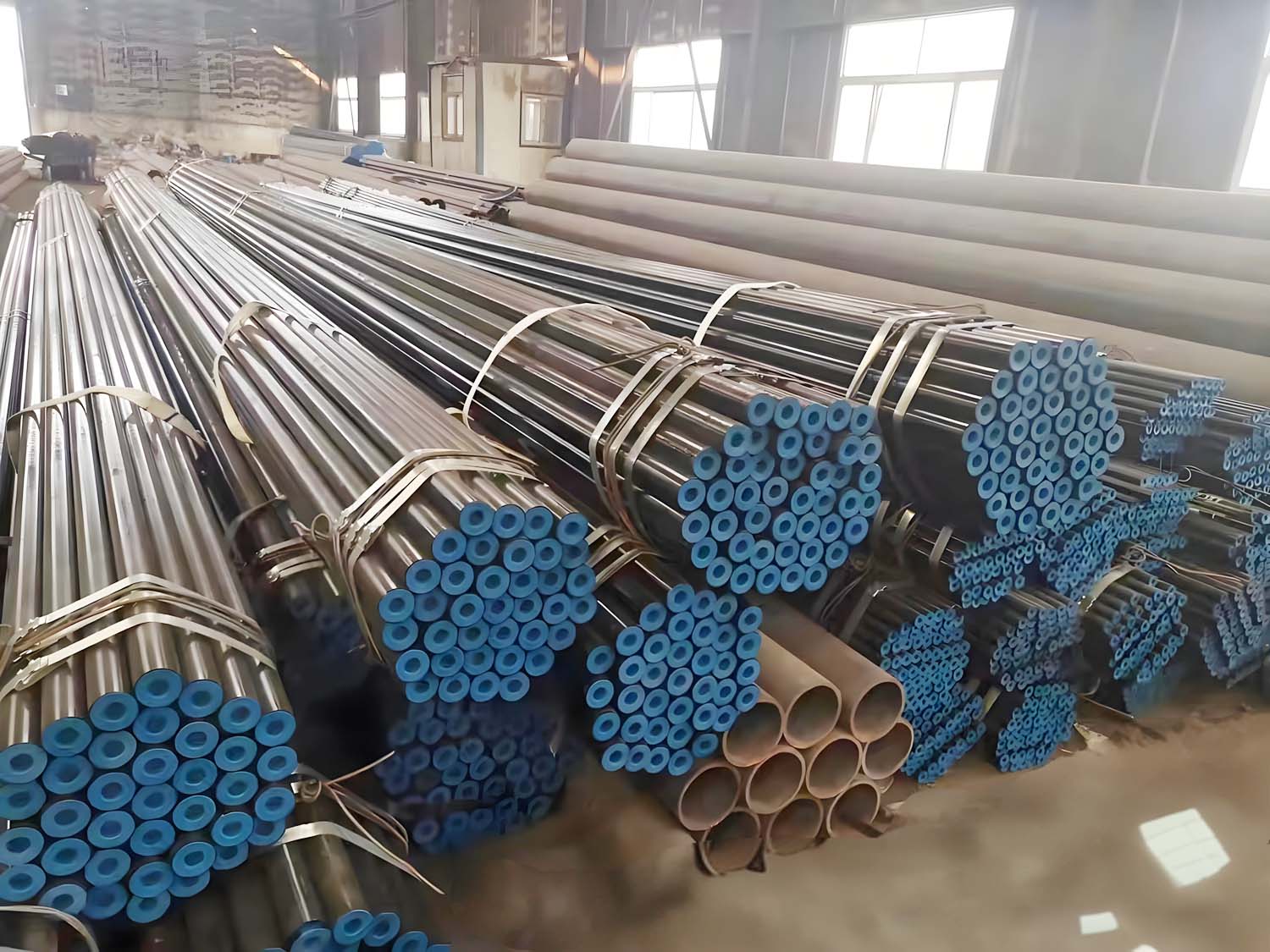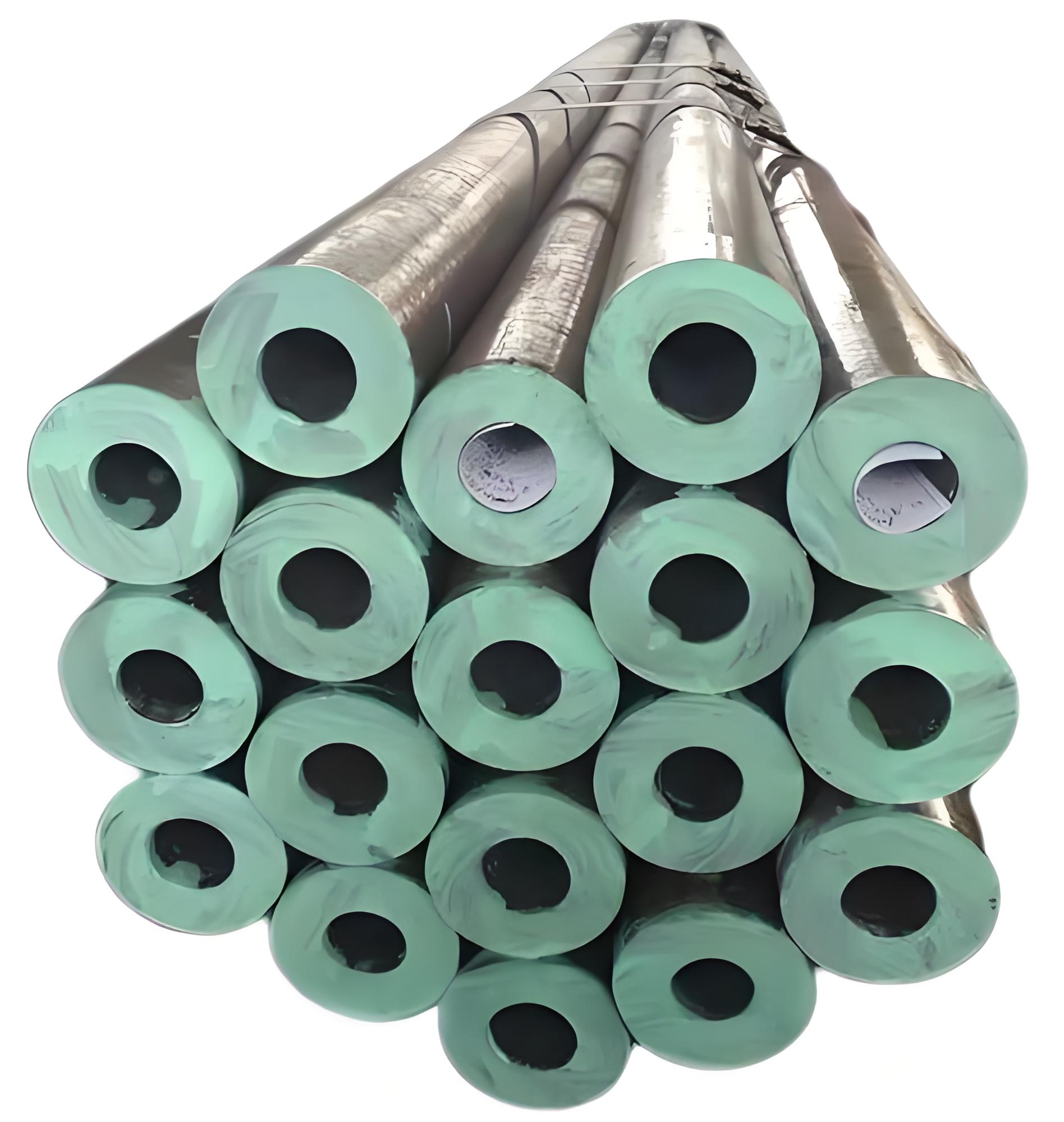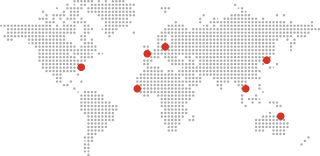ท่อเหล็ก ERW
ท่อเหล็ก ERW
ERW (ความต้านทานไฟฟ้าเชื่อม) ท่อเหล็ก are a type of steel pipe that are manufactured through a welding process that employs electric resistance. ERW pipes are used in various applications due to their high quality, ความทนทาน, และความคุ้มค่า. Here’s an overview of ERW steel pipes, their manufacturing process, การใช้งาน, และผลประโยชน์.
กระบวนการผลิต
- Raw Material:
- The manufacturing process begins with coils of steel, which are cut into strips of appropriate width.
- การขึ้นรูป:
- The steel strips are passed through a series of rollers to form them into a cylindrical shape.
- การเชื่อม:
- The edges of the cylindrical steel strip are heated and pressed together using electric resistance welding, forming a continuous seam. Unlike other welding methods, no filler material is used.
- จบ:
- The welded seam is then annealed (heat-treated) to remove any residual stresses from the welding process.
- The pipe is then cut to the desired length, and further finishing processes like straightening, end-facing, and coating may be applied.
- การควบคุมคุณภาพ:
- ERW pipes undergo various quality control tests, including ultrasonic testing, hydrostatic testing, and visual inspection to ensure they meet industry standards and specifications.
เส้นผ่านศูนย์กลางภายนอก
- พิสัย: 1/2″ ถึง 28″
ความหนาของผนัง
- พิสัย: 1.65 มม. ถึง 20 มม (กำหนดการทั้งหมด)
ความยาว
- พิสัย: 1 ม. ถึง 12 ม. หรือตามความต้องการของลูกค้า
มาตรฐาน
- ASTM 5L
- มาตรฐาน ASTM A53
- มาตรฐาน ASTM A178
- มาตรฐาน ASTM A500/501
- มาตรฐาน ASTM A691
- มาตรฐาน ASTM A252
- มาตรฐาน ASTM A672
- EN 10217
เกรดวัสดุ
- เอพีไอ 5 ลิตร: PSL1/PSL2 Gr.A, กลุ่มบี, X42, X46, X52, X56, X60, X65, X70
- มาตรฐาน ASTM A53: จีอาร์เอ, จีอาร์.บี
- EN: S275, S275JR, S355JRH, S355J2H
ปลายท่อ
- ปลายธรรมดา
- ปลายเอียง
- เกลียว
ตัวเลือกการรักษาพื้นผิว
- เปลือย
- ทาสีดำ
- เคลือบเงา
- สังกะสี
- เคลือบป้องกันการกัดกร่อน (3วิชาพลศึกษา, พีพี/อีพี, การเคลือบเอฟบีอี, ฯลฯ)
กระบวนการผลิต
- วาดเย็น
- รีดร้อน
การทดสอบและการประกันคุณภาพ
- การวิเคราะห์องค์ประกอบทางเคมี
- คุณสมบัติทางกล:
- แรงดึงสูงสุด
- ความแข็งแรงของผลผลิต
- การยืดตัว
- คุณสมบัติทางเทคนิค:
- การทดสอบการทำให้เรียบ
- การทดสอบการดัด
- การทดสอบความแข็ง
- การทดสอบแรงกระแทก
- การตรวจสอบขนาดภายนอก
- การทดสอบอุทกสถิต
- การทดสอบแบบไม่ทำลาย (NDT):
- อีที (การทดสอบกระแสเอ็ดดี้)
- RT (การทดสอบด้วยรังสี)
- ยูทาห์ (การทดสอบอัลตราโซนิก)
ข้อมูลจำเพาะ
ข้อมูลจำเพาะ:
|
INCH
|
ของ
(มม)
|
Strandard Wall Thickness
|
|||||||
|
SCH 10WT
(มม)
|
SCH 20WT
(มม)
|
SCH 40WT
(mm)
|
SCH 60WT
(มม)
|
SCH 80WT (mm) |
SCH 100WT (มม) |
SCH 160WT (mm) |
XXS (มม) |
||
|
1/4-
|
13.7
|
|
|
2.24
|
|
3.02
|
|
|
|
|
3/8-
|
17.1
|
|
|
2.31
|
|
3.2
|
|
|
|
|
1/2-
|
21.3
|
2.11
|
|
2.77
|
|
3.73
|
|
4.78
|
7.47
|
|
3/4″
|
26.7
|
2.11
|
|
2.87
|
|
3.91
|
|
5.56
|
7.82
|
|
1″
|
33.4
|
2.77
|
|
3.38
|
|
4.55
|
|
6.35
|
9.09
|
|
1-1/4″
|
42.2
|
2.77
|
|
3.56
|
|
4.85
|
|
6.35
|
9.7
|
|
1-1/2″
|
48.3
|
2.77
|
|
3.68
|
|
5.08
|
|
7.14
|
10.15
|
|
2″
|
60.3
|
2.77
|
|
3.91
|
|
5.54
|
|
8.74
|
11.07
|
|
2-1/2″
|
73
|
3.05
|
|
5.16
|
|
7.01
|
|
9.53
|
14.02
|
|
3″
|
88.9
|
3.05
|
|
5.49
|
|
7.62
|
|
11.13
|
15.24
|
|
3-1/2″
|
101.6
|
3.05
|
|
5.74
|
|
8.08
|
|
|
|
|
4″
|
114.3
|
3.05
|
4.5
|
6.02
|
|
8.56
|
|
13.49
|
17.12
|
|
5″
|
141.3
|
3.4
|
|
6.55
|
|
9.53
|
|
15.88
|
19.05
|
|
6″
|
168.3
|
3.4
|
|
7.11
|
|
10.97
|
|
18.26
|
21.95
|
|
8″
|
219.1
|
3.76
|
6.35
|
8.18
|
10.31
|
12.7
|
15.09
|
23.01
|
22.23
|
|
10″
|
273
|
4.19
|
6.35
|
9.27
|
12.7
|
15.09
|
18.26
|
28.58
|
25.4
|
|
12″
|
323.8
|
4.57
|
6.35
|
10.31
|
14.27
|
17.48
|
21.44
|
33.32
|
25.4
|
|
14″
|
355
|
6.35
|
7.92
|
11.13
|
15.09
|
19.05
|
23.83
|
36.71
|
|
|
16″
|
406
|
6.35
|
7.92
|
12.7
|
16.66
|
21.44
|
26.19
|
40.49
|
|
|
18″
|
457
|
6.35
|
7.92
|
14.27
|
19.05
|
23.83
|
29.36
|
46.24
|
|
|
20″
|
508
|
6.35
|
9.53
|
15.09
|
20.62
|
26.19
|
32.54
|
50.01
|
|
|
22″
|
559
|
6.35
|
9.53
|
|
22.23
|
28.58
|
34.93
|
54.98
|
|
|
24″
|
610
|
6.35
|
9.53
|
17.48
|
24.61
|
30.96
|
38.89
|
59.54
|
|
|
26″
|
660
|
7.92
|
12.7
|
|
|
|
|
|
|
|
28″
|
711
|
7.92
|
12.7
|
|
|
|
|
|
|
|
30″
|
762
|
7.92
|
12.7
|
|
|
|
|
|
|
|
32″
|
813
|
7.92
|
12.7
|
17.48
|
|
|
|
|
|
|
34″
|
863
|
7.92
|
12.7
|
17.48
|
|
|
|
|
|
|
36″
|
914
|
7.92
|
12.7
|
19.05
|
|
|
|
|
|
|
38″
|
965
|
|
|
|
|
|
|
|
|
|
40″
|
1016
|
|
|
|
|
|
|
|
|
|
42″
|
1066
|
|
|
|
|
|
|
|
|
|
44″
|
1117
|
|
|
|
|
|
|
|
|
|
46″
|
1168
|
|
|
|
|
|
|
|
|
|
48″
|
1219
|
|
|
|
|
|
|
|
|
มาตรฐาน
การวิเคราะห์ทางเคมีและสมบัติทางกล
| มาตรฐาน | ระดับ | ระดับ | การวิเคราะห์ทางเคมี(%) | คุณสมบัติทางกล(นาที)(เมปา) | ||||
| ค | มน | ป | ส | ความต้านแรงดึง | ความแข็งแรงของผลผลิต | |||
| เอพีไอ 5 ลิตร | PSL1 | บี | 0.26 | 1.20 | 0.030 | 0.030 | 414 | 241 |
| X42 | 0.26 | 1.30 | 0.030 | 0.030 | 414 | 290 | ||
| X46 | 0.26 | 1.40 | 0.030 | 0.030 | 434 | 317 | ||
| X52 | 0.26 | 1.40 | 0.030 | 0.030 | 455 | 359 | ||
| X56 | 0.26 | 1.40 | 0.030 | 0.030 | 490 | 386 | ||
| X60 | 0.26 | 1.40 | 0.030 | 0.030 | 517 | 414 | ||
| X65 | 0.26 | 1.45 | 0.030 | 0.030 | 531 | 448 | ||
| X70 | 0.26 | 1.65 | 0.030 | 0.030 | 565 | 483 | ||
| PSL2 | บี | 0.22 | 1.20 | 0.025 | 0.015 | 414 | 241 | |
| X42 | 0.22 | 1.30 | 0.025 | 0.015 | 414 | 290 | ||
| X46 | 0.22 | 1.40 | 0.025 | 0.015 | 434 | 317 | ||
| X52 | 0.22 | 1.40 | 0.025 | 0.015 | 455 | 359 | ||
| X56 | 0.22 | 1.40 | 0.025 | 0.015 | 490 | 386 | ||
| X60 | 0.22 | 1.40 | 0.025 | 0.015 | 517 | 414 | ||
| X65 | 0.22 | 1.45 | 0.025 | 0.015 | 531 | 448 | ||
| X70 | 0.22 | 1.65 | 0.025 | 0.015 | 565 | 483 | ||
| X80 | 0.22 | 1.85 | 0.025 | 0.015 | 621 | 552 | ||
กระบวนการ
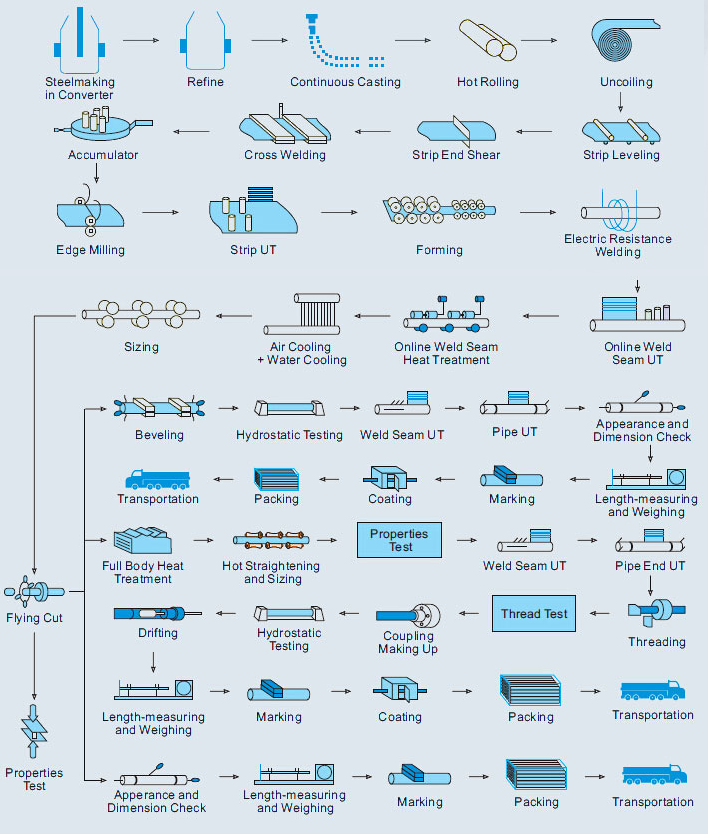
การใช้งาน
ERW steel pipes are used in a wide range of applications due to their versatility and cost-efficiency:
- อุตสาหกรรมน้ำมันและก๊าซ: Transportation of oil, แก๊ส, และของเหลวอื่นๆ.
- ระบบประปา: Pipes for potable water and sewage systems.
- อุตสาหกรรมยานยนต์: ส่วนประกอบโครงสร้าง, ระบบไอเสีย, and other automotive parts.
- การก่อสร้าง: Structural applications in buildings, สะพาน, และโครงการโครงสร้างพื้นฐานอื่นๆ.
- วิศวกรรมเครื่องกลและทั่วไป: Fabrication of mechanical parts and general engineering components.
ประโยชน์
- คุ้มค่า: ERW pipes are generally less expensive than seamless pipes.
- High Quality: The manufacturing process ensures a high degree of dimensional accuracy and uniformity.
- ความแข็งแกร่งและความทนทาน: ERW pipes have good mechanical properties and are suitable for high-pressure applications.
- ความเก่งกาจ: Available in various sizes, ความหนา, และความยาว, making them suitable for diverse applications.
- ประสิทธิภาพ: The ERW process is efficient, allowing for mass production with consistent quality.
Types of ERW Pipes
- Round ERW Pipes: Commonly used in fluid transportation.
- Square and Rectangular ERW Pipes: Often used in structural applications.
- Galvanized ERW Pipes: Coated with zinc to prevent corrosion, used in outdoor and harsh environments.
มาตรฐานและข้อมูลจำเพาะ
ERW steel pipes are manufactured to meet various international standards and specifications, รวมทั้ง:
- เอพีไอ 5 ลิตร: Specification for line pipes.
- มาตรฐาน ASTM A53: ข้อกำหนดมาตรฐานสำหรับท่อ, เหล็ก, สีดำและจุ่มร้อน, เคลือบสังกะสี, เชื่อมและไร้รอยต่อ.
- มาตรฐาน ASTM A252: Standard specification for welded and seamless steel pipe piles.
- วิทยาศาสตรบัณฑิต 1387: ข้อกำหนดสำหรับท่อเหล็กและท่อแบบเกลียวและซ็อกเก็ต และสำหรับท่อเหล็กปลายธรรมดาที่เหมาะสำหรับการเชื่อมหรือขันสกรูเข้ากับ BS 21 เกลียวท่อ.
บทสรุป
ERW steel pipes are an essential component in various industries due to their reliability, ความคุ้มค่า, และความคล่องตัว. Their manufacturing process ensures a high-quality product that meets stringent industry standards, making them a preferred choice for many applications.

